
How to Use Relay: Examples, Pinouts, and Specs
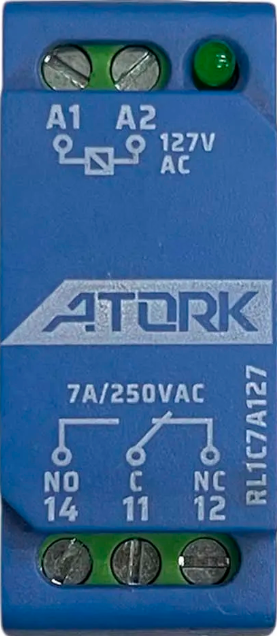
 Design with Relay in Cirkit Designer
Design with Relay in Cirkit DesignerIntroduction
A relay is an electromechanical switch that uses an electromagnetic coil to open or close a circuit. It allows a low-power signal to control a high-power device, making it an essential component in many electronic and electrical systems. Relays are widely used in applications such as home automation, industrial control systems, automotive electronics, and power distribution systems. They are ideal for isolating control circuits from high-power loads, ensuring safety and reliability.
Explore Projects Built with Relay
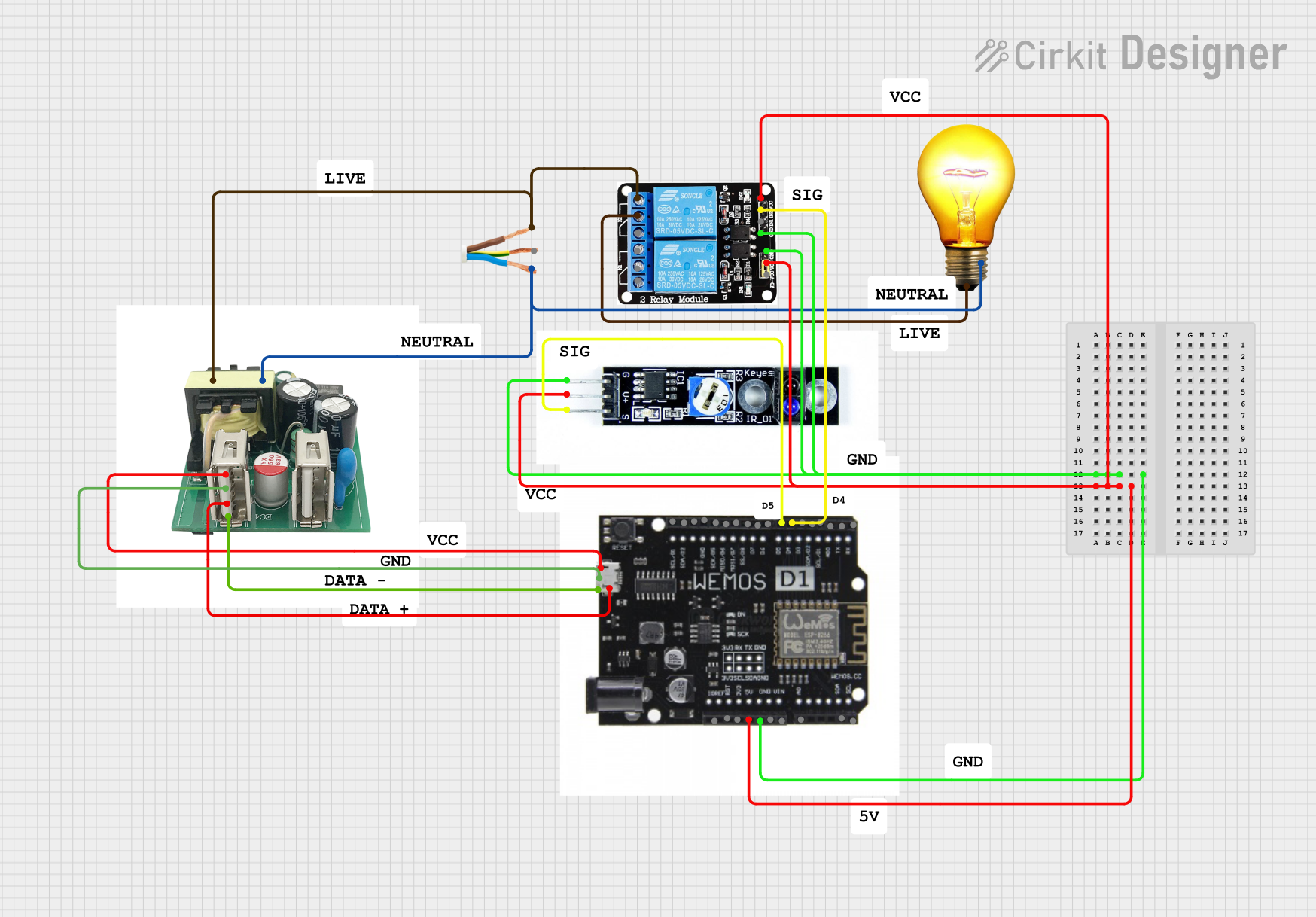
 Open Project in Cirkit Designer
Open Project in Cirkit Designer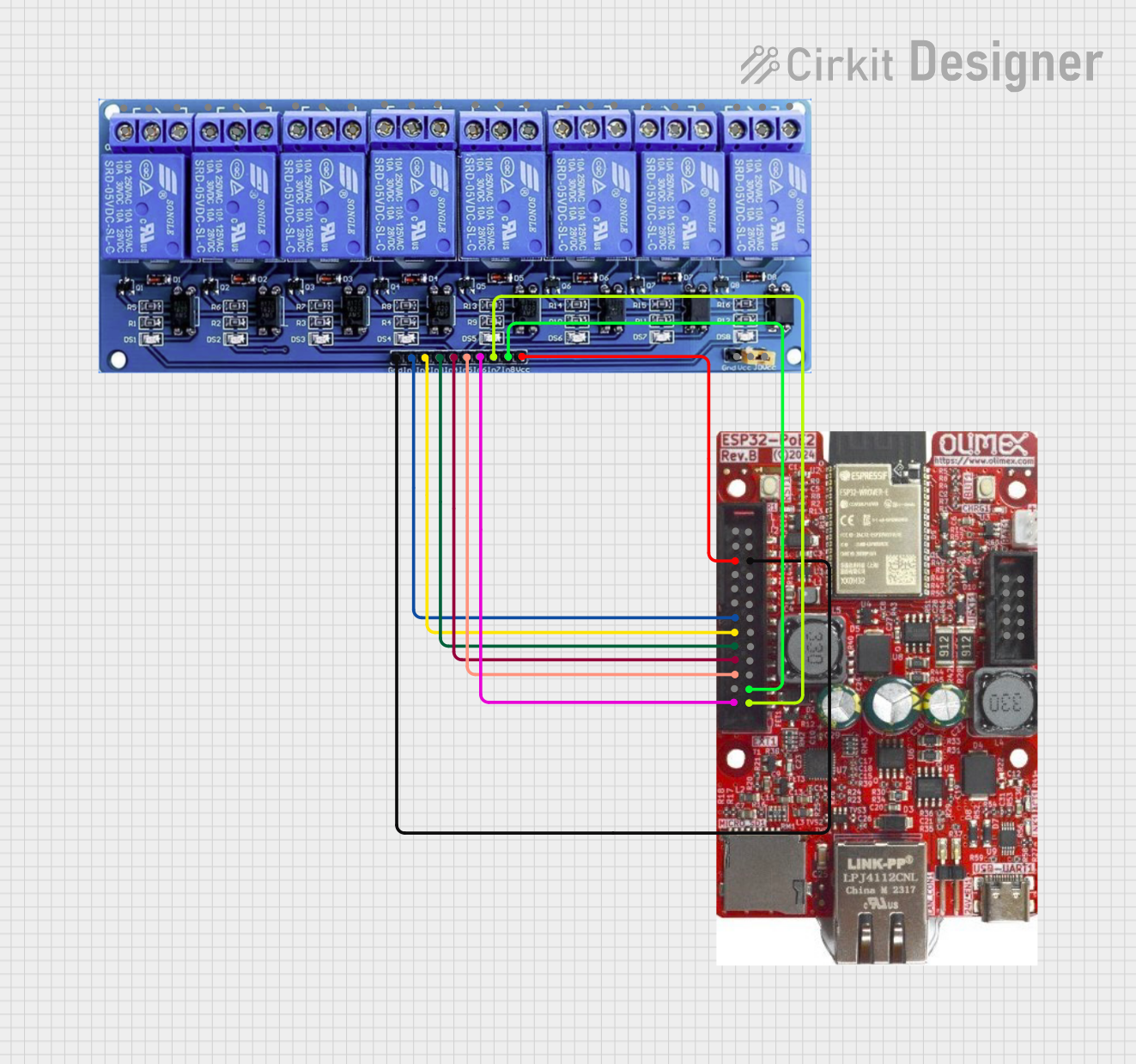
 Open Project in Cirkit Designer
Open Project in Cirkit Designer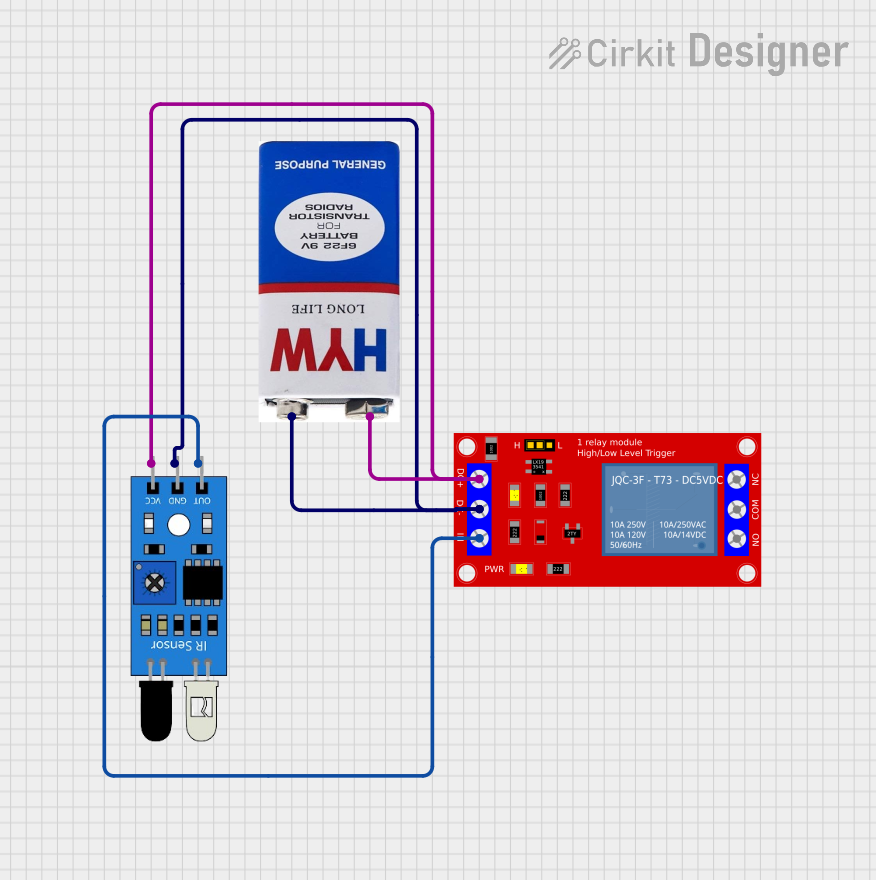
 Open Project in Cirkit Designer
Open Project in Cirkit Designer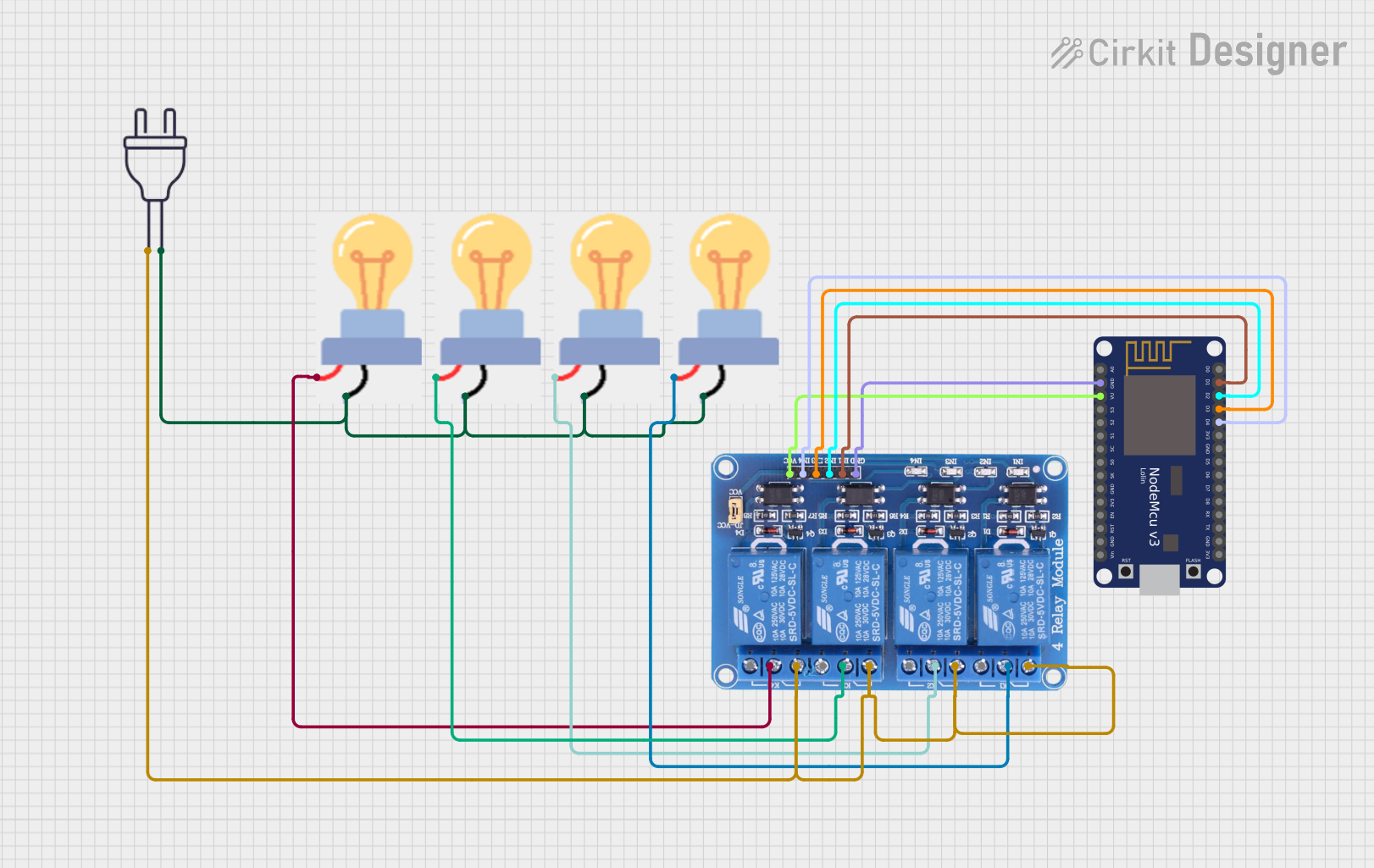
 Open Project in Cirkit Designer
Open Project in Cirkit DesignerExplore Projects Built with Relay

 Open Project in Cirkit Designer
Open Project in Cirkit Designer
 Open Project in Cirkit Designer
Open Project in Cirkit Designer
 Open Project in Cirkit Designer
Open Project in Cirkit Designer
 Open Project in Cirkit Designer
Open Project in Cirkit DesignerTechnical Specifications
Below are the general technical specifications for a standard single-pole, double-throw (SPDT) relay. Specifications may vary depending on the specific relay model.
General Specifications
- Coil Voltage: 5V, 12V, or 24V DC (common options)
- Coil Current: Typically 70-150 mA (depending on the relay)
- Contact Rating: 10A at 250V AC or 10A at 30V DC
- Contact Configuration: SPDT (Single Pole Double Throw) or DPDT (Double Pole Double Throw)
- Switching Time: 5-15 ms (typical)
- Dielectric Strength: 1000V AC (between coil and contacts)
- Insulation Resistance: ≥ 100 MΩ at 500V DC
- Mechanical Life: 10 million operations (typical)
- Electrical Life: 100,000 operations (typical)
Pin Configuration and Descriptions
The pin configuration for a standard 5-pin SPDT relay is as follows:
| Pin Number | Name | Description |
|---|---|---|
| 1 | Coil (+) | Positive terminal of the electromagnetic coil. |
| 2 | Coil (-) | Negative terminal of the electromagnetic coil. |
| 3 | Common (COM) | The common terminal connected to the moving contact inside the relay. |
| 4 | Normally Open (NO) | The terminal that is disconnected from COM when the relay is inactive. It connects to COM when the relay is activated. |
| 5 | Normally Closed (NC) | The terminal that is connected to COM when the relay is inactive. It disconnects from COM when the relay is activated. |
Usage Instructions
How to Use the Relay in a Circuit
- Power the Coil: Connect the relay's coil pins (1 and 2) to a DC power source. Ensure the voltage matches the relay's rated coil voltage (e.g., 5V, 12V).
- Control the Load: Connect the load (e.g., a motor, light, or appliance) to the relay's COM and NO or NC pins:
- Use the NO pin if you want the load to turn on when the relay is activated.
- Use the NC pin if you want the load to turn off when the relay is activated.
- Control Signal: Use a low-power control signal (e.g., from a microcontroller like an Arduino) to energize the relay's coil. A transistor or relay driver circuit may be required to amplify the control signal.
Important Considerations and Best Practices
- Diode Protection: Always connect a flyback diode (e.g., 1N4007) across the relay coil to protect the circuit from voltage spikes caused by the coil's inductance.
- Power Ratings: Ensure the relay's contact ratings (voltage and current) are sufficient for the load you are controlling.
- Isolation: Use optocouplers or relay modules with built-in isolation for added safety when interfacing with microcontrollers.
- Switching Frequency: Avoid using relays for high-frequency switching applications, as they are mechanical devices and have limited switching speed.
Example: Connecting a Relay to an Arduino UNO
Below is an example of how to control a relay using an Arduino UNO:
// Example: Controlling a relay with an Arduino UNO
// Pin 7 is connected to the relay module's control pin
#define RELAY_PIN 7 // Define the Arduino pin connected to the relay module
void setup() {
pinMode(RELAY_PIN, OUTPUT); // Set the relay pin as an output
digitalWrite(RELAY_PIN, LOW); // Ensure the relay is off at startup
}
void loop() {
digitalWrite(RELAY_PIN, HIGH); // Turn the relay on
delay(1000); // Keep the relay on for 1 second
digitalWrite(RELAY_PIN, LOW); // Turn the relay off
delay(1000); // Keep the relay off for 1 second
}
Troubleshooting and FAQs
Common Issues and Solutions
Relay Not Activating
- Cause: Insufficient voltage or current to the coil.
- Solution: Verify the power supply voltage and current match the relay's specifications.
Load Not Switching
- Cause: Incorrect wiring of the load to the relay's COM, NO, or NC pins.
- Solution: Double-check the wiring and ensure the load is connected to the correct pins.
Microcontroller Cannot Drive the Relay
- Cause: The microcontroller's output current is too low to energize the relay coil.
- Solution: Use a transistor or relay driver module to amplify the control signal.
Relay Buzzing or Chattering
- Cause: Insufficient or unstable power supply to the coil.
- Solution: Ensure a stable power source and add a capacitor across the power supply if needed.
Voltage Spikes Damaging Components
- Cause: Inductive kickback from the relay coil.
- Solution: Install a flyback diode across the coil terminals.
FAQs
Q: Can I use a relay to control an AC load?
- A: Yes, relays are commonly used to control AC loads. Ensure the relay's contact ratings are suitable for the AC voltage and current.
Q: What is the difference between NO and NC terminals?
- A: The NO (Normally Open) terminal is disconnected from the COM terminal when the relay is inactive, while the NC (Normally Closed) terminal is connected to the COM terminal when the relay is inactive.
Q: Can I use a relay for high-speed switching?
- A: No, relays are not suitable for high-speed switching due to their mechanical nature. Use solid-state relays (SSRs) or transistors for high-speed applications.